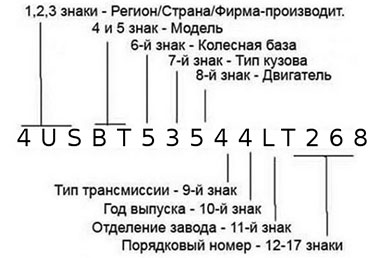
Cars, like people, are required to prove their "identity". In case of a car, there is a data sheet certificate for this, and the most important parameter in this document is the VIN code. What is it?
A personal car document can tell about it much more than any person’s passport about its holder. The VIN code (Vehicle identification number) is a seventeen-character identification code consisting of Arabic numbers and Latin letters. Their combination contains absolutely all information about the car, with the exception, perhaps, of its current technical condition.
The VIN code is indicated in the vehicle data sheet, as well as on the vehicle itself. Usually this is a small plate, very tightly attached to various integral parts of the vehicle body in several places. VIN-code on the car and specified in the data sheet must match!
There are many service sites on the Internet where you can find out the history of a vehicle using a VIN code. What do these numbers and letters mean?
The first three symbols indicate the region, the country of origin, and the manufacturer. Symbols 4 and 5 talk about the car model; symbol 6 and 7 describe the wheelbase and body type; symbols 8 and 9 mean engine and transmission; 10 and 11 indicate the year of manufacture and a plant division. The remaining symbols, from 12 to 17, are the serial number of the vehicle, that is, how the car passed through the assembly line.
Interestingly, in the European cars, the last five symbols are letters and numbers, while American manufacturers only use numbers.
It is also important to know that in no VIN-code use Latin letters I, O, Q are ever used, because they are extremely easy to change and fake.
The VIN code is used when importing a car into a country, selling, buying, donating, registering, passing inspection, and in case of a pledge. If at the time of any of these procedures the car owner refuses to show you the VIN code, you should withdraw from the transaction, as the car is most likely either stolen or has a bad background.